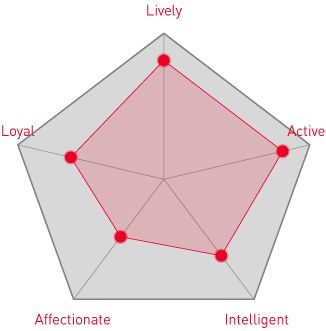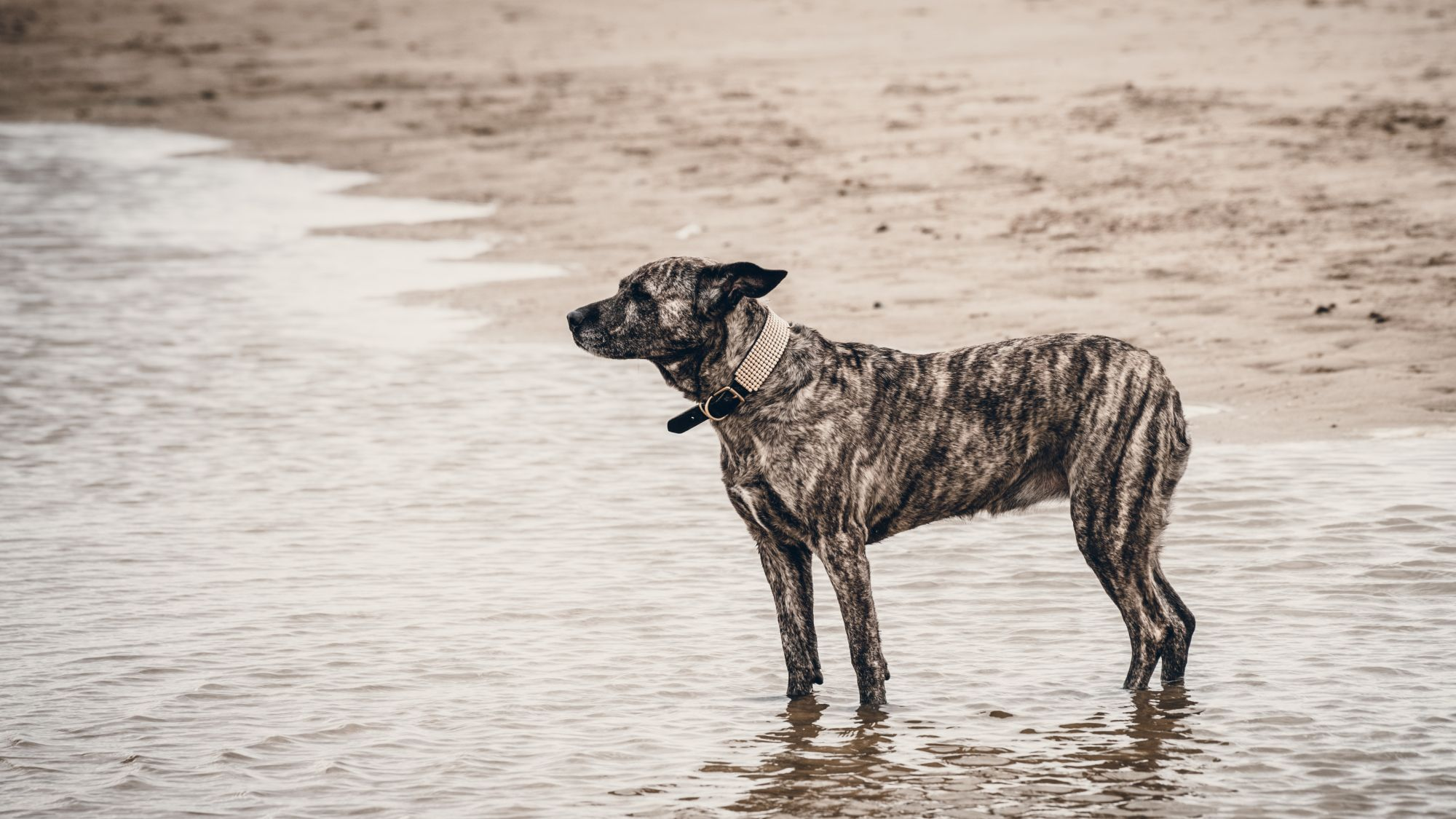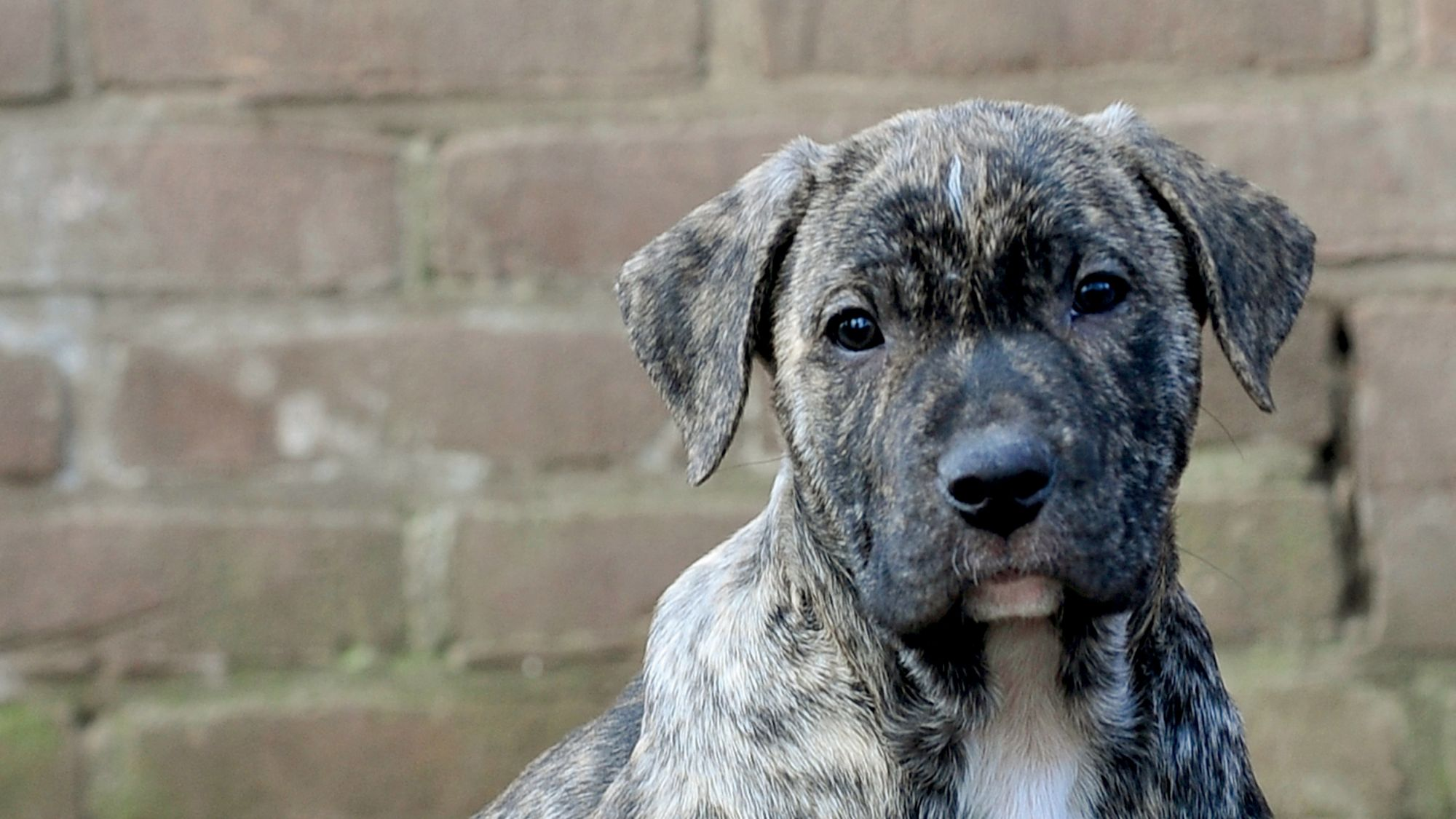
Let's talk Cimarrón Uruguayo Dogs
The large-sized Cimarrón Uruguayo is the mascot of the National Army of Uruguay, assuring their status as ultimate guard dog. But that’s not all: Originally bred as a hunting dog, today the versatile Cimarrón Uruguayo has evolved to be an attentive family companion, with a cool, calm and collected temperament. With early training and socialisation, the Cimarrón Uruguayo is great with children—but they are a bit too boisterous to play with little ones. This breed is definitely for sporty humans as they require one hour of exercise, twice a day. A healthy lifestyle for all parties involved.Official name: Cimarrón Uruguayo
Other names: Cimarrón, Uruguayan Cimarrón, Cimarrón Creole, Maroon Dog, Cerro Largo Dog, Perro Cimarrón, Cimarrón Dog, Uruguayan Gaucho Dog
Origins: Uruguay

| Drooling tendencies: |
|
Warm weather? | |
| Shedding level: | 
|
Suited to apartment living? | 
|
| Energy Level (high, low, medium) *: | High | Family pet?* |
 |
| Compatibility with other pets: |  |
Can stay alone?* |  |
* We advise against leaving pets alone for long stretches. Companionship can prevent emotional distress and destructive behaviour. Speak to your veterinarian for recommendations.
Every pet is different, even within a breed; this snapshot of this breed’s specifics should be taken as an indication.
For a happy, healthy and well-behaved pet, we recommend educating and socialising your pet as well as covering their basic welfare, social and behavioural needs.
Pets should never be left unsupervised with a child.
All domestic pets are sociable and prefer company. However, they can be taught to cope with solitude from an early age. Seek the advice of your veterinarian or trainer to help you do this.


| Baby age: | Birth to 2 months |
| Puppy age: | 2 to 15 months |
| Adult age: | 15 months to 5 years |
| Mature age: | 5 to 8 years |
| Senior age: | From 8 years |

1/7
Get to know the Cimarrón Uruguayo
All you need to know about the breed
Sporty footwear and waterproofs will be necessary for life with a Cimarrón Uruguayo. This former hunting dog needs around two hours of exercise per day, so is not for couch potatoes. The only native dog breed in Uruguay, the Cimarrón Uruguayo likes to roam free as much as possible. As they can weigh up to 45kg (99lb), it is ideal if you have a spacious apartment or house, including a garden, but make sure you have a secure fence, otherwise your Cimarrón Uruguayo may wander off having picked up a tempting scent.
Indoors, your Cimarrón Uruguayo makes for a calm canine presence with a steady temperament. They are capable of forming loyal attachments to their humans and enjoy the company of children (once trained). However, due to their size and power, it is not a good idea to let your Cimarrón Uruguayo play with very small children, as they may cause an unintentional accident.
Cimarrón Uruguayo are excellent guard dogs, which means they are wary of strangers but not aggressive or confrontational—they rarely use their bark unless they sense real danger. Be aware that smaller household pets may meet a grisly end (gulp) due to the breed’s high prey drive. Early socialisation and training can help to prevent this but it is case by case so proceed with caution.
Stay active with your Cimarrón Uruguayo and you will be rewarded with a loyal companion. Sure, you may have to clean a bit of mud off of the furniture after all that time outside but the pay-off is most certainly worth it.

2/7
2 facts about Cimarrón Uruguayo Dogs
1. Looks can be deceiving
Many make the mistake of thinking the Cimarrón Uruguayo is an aggressive dog, unsuited to family life. They have a softer side for sure, which is most evident with children, once trained of course. However, with a hunting heritage, the Cimarrón Uruguayo has a high prey instinct, so cohabiting with smaller pets is off the table.
2. Will run rings around you
A Cimarrón Uruguayo is not the dog for first-time owners. They need a confident human, who can meet their demanding exercise needs and respect their intelligence, but show them their place within the household. Garden space is also a good idea if you welcome a Cimarrón Uruguayo into your home—and be sure to check the fence regularly. They like digging and looking for potential escape routes—even when content!
History of the breed
Canine historians have found evidence to suggest that the Cimarrón Uruguayo dates back to the 17th century, counting the Alano Español as their ancestors. The breed arrived in Uruguay with Portuguese colonists, who had previously trained them to drive and herd cattle, as well as hunt and act as guard dogs. Once in Uruguay however, the colonists abandoned them, forcing the Cimarrón Uruguayo to fend for themselves in the wild. Unsurprisingly, the breed had to develop the sharpest of hunting skills in order to survive.
The domestication of the Cimarrón Uruguayo has been a long and winding road, with official breed records existing only more recently. Their evolution into amiable canine companions is thanks to local ranchers in Uruguay, who were the first to catch them and tame them. Today the breed is popular in both Argentina and Brazil. A few breeders have imported the Cimarrón Uruguayo to the US, with the aim of gaining official recognition from kennel clubs there. The Cimarrón Uruguayo was recognised by the United Kennel Club in 2006, and the FCI (Fédération Cynologique Internationale) more recently in 2017.

4/7
From head to tail
Physical characteristics of Alaskan Malamutes
1. Eyes
Almond shaped eyes of medium size.
2. Coat
A smooth, short top coat with a dense undercoat.
3. Body
Body is muscular and compact with a broad chest.

5/7
Things to look out for
From specific breed traits to a general health overview, here are some interesting facts about your Cimarrón Uruguayo

6/7
Caring for your Cimarrón Uruguayo
Grooming, training and exercise tips
When it comes to grooming your Cimarrón Uruguayo, once to twice a week will suffice to keep their coat sleek and free of dead hair. During shedding season, increase this to three or four times per week. Your Cimarrón Uruguayo will be spending a lot of time outside, so a monthly bath will maintain the health of their coat and keep unwanted odours at bay. Brushing their teeth should be daily. The breed demands intense physical exercise, and makes for a great jogging or biking buddy. Keep them mentally stimulated with a variety of interactive toys—a Cimarrón Uruguayo is most content when they feel useful with a task to complete. Early socialisation and training are essential for Cimarrón Uruguayo dogs. Their guard dog and watchdog qualities make them wary of new people, which is something to keep in check. The Cimarrón Uruguayo may test your authority, so plenty of confidence is required to show them who's boss. They also have a high prey drive so need to learn respectful behaviour towards other dogs and animals as soon as possible. Remember that any food treats given as rewards during training sessions should be counted as part of their daily kibble.7/7
All about Cimarrón Uruguayo Dogs
No. Many find the Cimarrón Uruguayo intimidating at first glance. In fact, the Cimarrón Uruguayo has a steady and calm temperament. They are loyal to their humans, and make excellent guard dogs and watchdogs. But this is a dog with a hunting heritage so your Cimarrón Uruguayo will always have a strong prey instinct.
It depends. The Cimarrón Uruguayo has a dominant presence and needs to be properly introduced to other household dogs, to keep the peace. If raised from a young age with other animals, their prey instinct may just be kept in check.
translations.feature.breeds.otherbreeds
Read more on this topic

How your dog's nutrition needs change with age

How to adopt a dog

Things to consider before getting a dog
Sources
1 - Veterinary Centers of America https://vcahospitals.com/
2 - Royal Canin Dog Encyclopaedia. Ed 2010 and 2020
3 - Banfield Pet Hospital https://www.banfield.com/
4 - Royal Canin BHN Product Book
5 - American Kennel Club https://www.akc.org/


